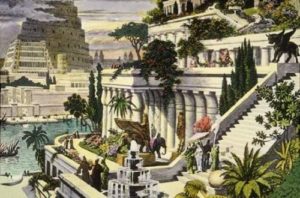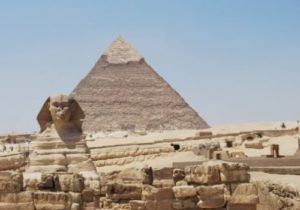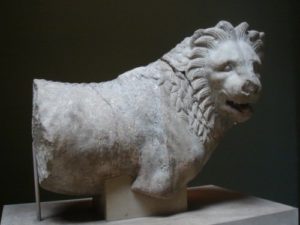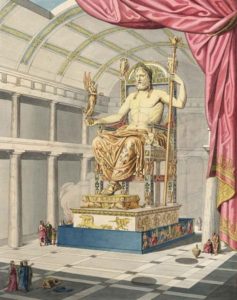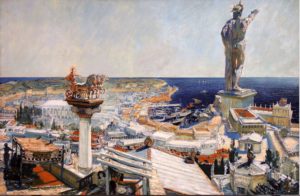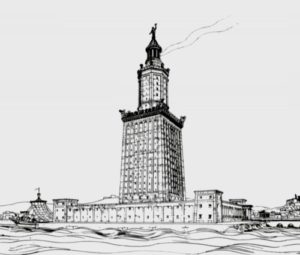Sunday, Feb. 19
Good morning, Church! If you have your Bibles, please grab them and turn to Revelation Ch. 2. As you turn there, let me remind you of the sermon I preached over the summer as an introduction and an overview of the book of Revelation. In that sermon, I noted a few things that are important to remember.
Revelation: A Symbolic Book with Practical Meaning
First, this is a very symbolic book. The book of Revelation is not a book to be read in a wooden, literal fashion. Instead, its symbols should be interpreted by other parts of the Old and New Testaments. The second thing to remember is that this book, written by the Apostle John while he was in exile on the island of Patmos, was written to seven Churches in the Roman province of Asia. You see, these were real first century Christians who were expected to learn and grow from these messages.
So, we’d be mistaken to think that these are just ancient messages without any application to the Church today. You see, these principled letters address issues pertaining to doctrinal purity, apathy, wealth, and immorality. And so, they are messages that Koinonia Church of the Woodlands must heed. They are messages that each of us, as families and individuals, must learn. They are messages that contain very real problems, and very real promises that are applicable to our situation today.
Introducing the Structure of the Revelation Letters – The Five “A’s”
Now, each of these seven letters have a similar structure. In fact, the structure follows, what I’ll call,
“The 5 A’s of the Revelation letters.” You see, all of the letters have
- an Address
- an Author description
- an Announcement of what is known about the Church
- an Admonition
- an Assurance
In the address, we are told that the message is to be given to a particular church in Asia. In the author description, we see that Jesus is described in a unique way to each Church. In the announcement, Jesus tells the Church that He is intimately familiar with their situation, which leads to the admonition where Jesus gives some specific and unique commands. And then the message ends with an assurance for those who overcome.
A Message to the Church at Ephesus
So, this is the structure of this section of sacred Scripture. And, with that, let’s just dig into today’s passage.
Look at verse 1
To the Angel.. or more likely the Greek ‘Eu-angel’ or ‘Evangelist’ ~ Messenger of the Church
Now, let’s stop here for a moment. You could argue that there is a 6th A in every letter, because every letter is actually written to an angel, or at least that’s what it says in the English. But the word ‘angel’ in the Greek is angel; well, actually, it is ‘angelos’, which gives us the word “angel.” Now, the word does not refer to a spiritual being with a halo and wings; it refers to a messenger.
[learn_more caption=”ággelos…”] 32 – properly, a messenger or delegate – either human (Mt 11:10; Lk 7:24, 9:52; Gal 4:14; Js 2:25) or heavenly (a celestial angel); someone sent (by God) to proclaim His message.[/learn_more]
The word ‘gospel’ in the Greek is Eu-angel, which literally means good message. We get the word evangelist from it – which is someone who brings the good news or the good message. And so, many people, including me, believe that the ‘angel’ in these letters of Revelation are not angels at all, but they are messengers, or leaders, of the churches receiving the messages.
[learn_more caption=”Eu-angel or Evangelist”] (n.) late 12c., “Matthew, Mark, Luke or John,” from Old French evangelist and directly from Late Latin evangelista, from Greek euangelistes “preacher of the gospel,” literally “bringer of good news,” from euangelizesthai “bring good news,” from eu- “good” (see eu-) + angellein “announce,” from angelos “messenger” (see angel). Online Etymology Dictionary [/learn_more]
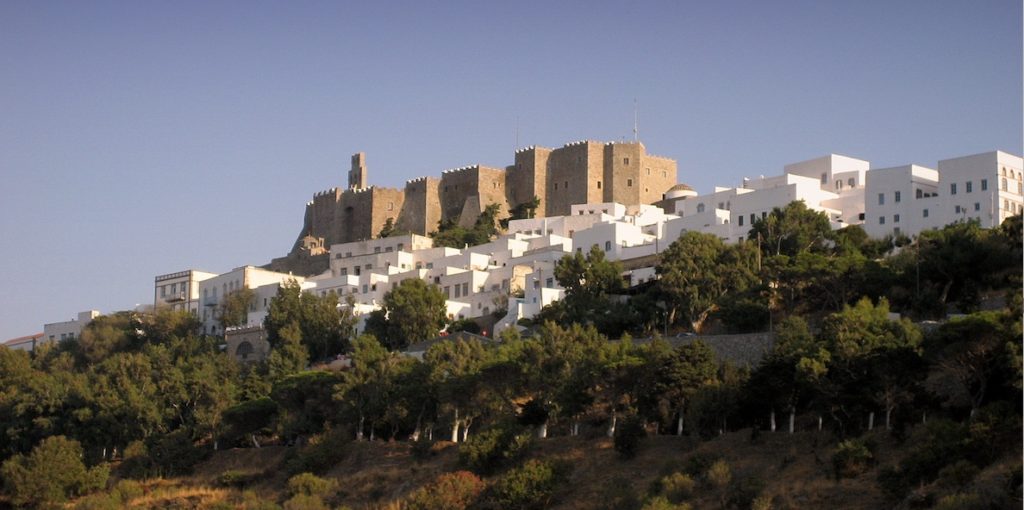
Given the context that these were real messages that had to be delivered to real people, it just seems reasonable that a human representative that was perhaps on the Isle of Patmos with John, would receive the message, carry it back to the particular church they were representing, and announce its contents for the Christian Church in that area. And so, I will proceed with the understanding that these are human messengers. Back to verse 1:
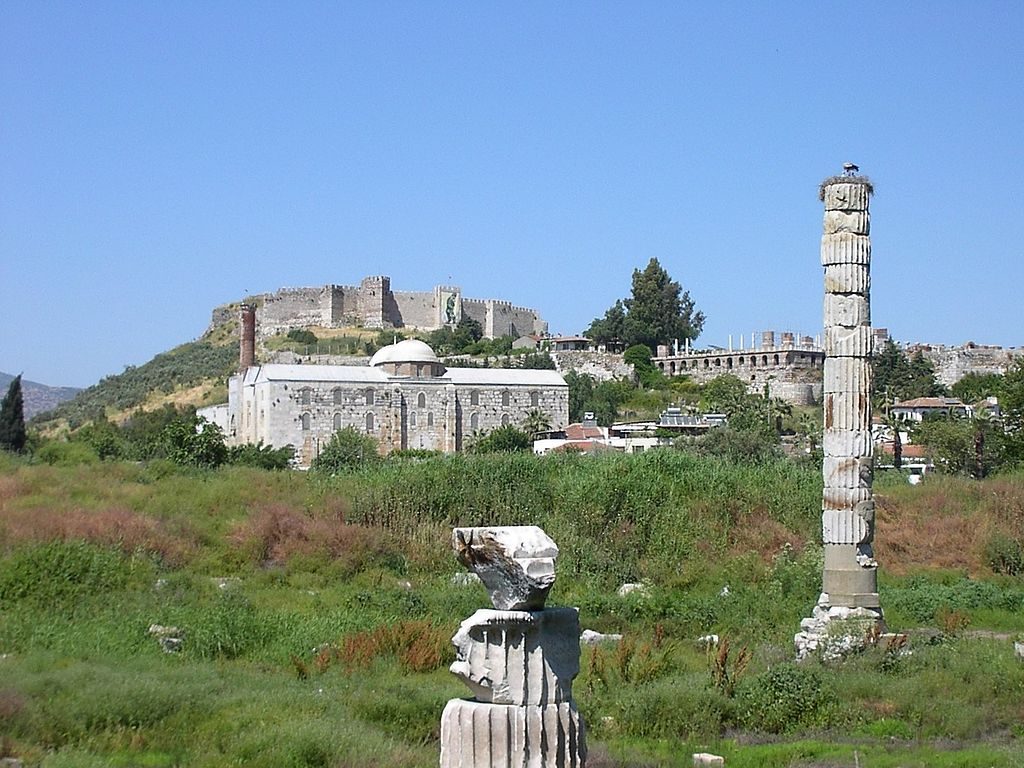
The Grecian City of Ephesus…Beautiful but Idolatrous and Immoral
To the angel of the church in Ephesus write:
Now, let’s stop for a moment again. John tells us that the messenger is to take the following message to Ephesus. Now, Ephesus was a huge city of about 250,000 people during the first century. It was one of seven churches in the province of Asia Minor, which is what we would call Turkey today. And the reason it was so big is because it had a huge harbor and was a center of trade in the ancient world. Any city that had ship access in the first century became a metropolis, and so it was with Ephesus – which was the gateway to all of Asia
But, most important for us is the religious aspect of it. It was the center of the worship of the goddess Artemis–Artemis being a Greek name; the Roman name was Diana. But the place of the worship of Diana was one of the Seven Wonders of the Ancient World. Now, I doubt any of you could name the other 6 wonders, but you’ve certainly heard of some of them.
One of them was the Pharos Lighthouse in Alexandria; another was the Great Pyramid at Giza. The third one was the hanging gardens in Babylon; the fourth was the Mausoleum in Halicarnassus; the fifth was the Colossus at Rhodes; the sixth was the statue of Zeus at Mount Olympus; and the seventh of them was this amazing temple in Ephesus to Diana.
This temple was made of glittering Persian marble. And, according to archaeologists, it was 425 feet long which is a bit bigger than a football field. It was 260 feet wide, and its 130 columns stood 60 feet high, 37 of them were embellished with gold and jewels that had been given by kings and embedded into the marble.

And , the worship of Diana itself was, frankly, beyond description. The very idol itself was a big ugly black cow-like thing with paps hanging down from it–not some beautiful goddess Diana that you might assume looks like a movie star…not at all. This was an ugly beast who was supposed to suckle people and give them spiritual life. But the worship itself was sleazy and chaotic. There were scores of eunuchs who had been castrated and thousands of priestesses who served as prostitutes all as an act of worship toward this cow-like thing. And to add to the chaos, there were unnumbered singers, flutists, and dancers filling this temple while people engaged in banking, trading, and unmentionable perversions.

[box] The Greek Philosopher, Heraclitus, wrote this about the Temple: “The morals of the temple were worse than the morals of animals, for even dogs do not mutilate each other….The people there were only fit to be drowned.”[/box]

The Development of the Church of Ephesus
So, this is a famous, but wicked city with a messy centerpiece. And huddled in the middle of all this is a famous church. You see, the New Testament tells us a good deal about this church in the city of Ephesus. And, we can outline its development in a number of fairly clear stages. First, there is the church’s birth. You can read about it in Acts 18 & 19. The Church was planted by Paul; it was the Church that was nurtured by Paul’s co-laborers: Priscilla and Aquila; it was the Church in which the excellent expositor, Apollos, spent time; it was the Church where Paul ministered for almost three years, preaching every day in the School of Tyrannus; it was the Church were Timothy pastored; and, according to consistent church historical traditions, the Apostle John himself ministered there. This Church was like the who’s who of Biblical leadership.

The Unique Challenges in Ephesus ~ Riots and Demonic Activity
Secondly, we see the unique challenges in Ephesus. For example, Paul’s daily sermons there had such an impact that riots broke out in the city because the growth of the church there was threatening the disgusting Temple worship. But other demonic activity was also prevalent in Ephesus. You see, Ephesus was the city where people took handkerchiefs from Paul and placed them on those who were infirmed; and then those people would be healed of their illness or their demonic possession. So, when people saw this, some non-Christian Jewish exorcists tried to expel demons…and I’m sure you remember the story, but a demon-possessed man in Ephesus said that he knew Paul and he knew Jesus, but he didn’t know these guys…and then proceeded to give the Jewish exorcists a ‘royal beat down’…which is a literal translation from the Greek. But, because of all of this, the name of Jesus was magnified, and all those who practiced magic in Ephesus began burning their books and renouncing their practice.

Now, let me just stop here and try to give you a picture of what this would be like. I mean, anytime anyone thought of Ephesus, they would think of the Temple to Diana.
[box] So, just picture if, in downtown Mecca, all the Muslims began coming to Christ so that they began burning their Koran’s in the street and renouncing their faith, or in Salt Lake City, if every Mormon started burning their books of Mormon, or in downtown Washington DC, if all the liberals began burning their Saul Alinsky books. I mean, we can hardly imagine such a transformation, but that’s what happened in Ephesus due to the Spirit working through Paul’s preaching.[/box]
A Reputation for Great Faith and Love, but in Danger from False Teachers
The third stage of the Ephesian Church is gleaned from Paul’s letter to them. He had said, for example, that he had …
“heard of their faith in the Lord Jesus and their love toward all the saints.” Eph. 1:15
This was their reputation – they were known for their faith and their love. But let’s also remember that Paul wrote one of the most comprehensive and systematic treatments of Christian truth to them. It’s full of rich doctrine and practical counsel – indicating that this was a Church full of mature believers. And so, Ephesus, at this stage in its life, seems to be a healthy and growing church in the midst of a wicked culture.
But then finally, at some point, Paul finds it necessary to send Timothy to pastor the congregations in Ephesus.(Tim. 1:3) And his letters to Timothy, written toward the end of his life, reveal real concern for the Ephesian congregations. False teaching had begun to creep in. There was a pressing need among them for faithful leadership. It’s a church now in need of some revitalization. And so, Timothy has been dispatched to bring renewal and reformation to the church. And that’s the last we hear about the Church in Ephesus, until the Book of Revelation which is several years later.
The Author: Christ ~The One who holds Seven Stars (seven churches) in His right hand…
Rev. 1:1 To the messenger of the Church in Ephesus, write: The One who holds the seven stars in His right hand, the One who walks among the seven golden lampstands, says this:
Now, this second half of verse 1 provides the author’s description…the second A. We’ve already seen to whom it was addressed; now we discover the Author. And, we all know that Jesus is the author of all of these messages. And we know this because the One talking in chapter 2 is the same person as the one talking at the end of Chapter 1. And in Chapter 1, He is described as one like a son of man, with snow white hair, eyes like fire, a sword coming out of His mouth…He tells John that He is the first and the last, He was dead and now is alive forevermore, and He holds the keys of death and Hades. Church, there is no question that the One speaking is the sovereign Christ who holds all things together and has preeminence over all.
But, Jesus describes Himself differently at the beginning of each letter. And here in the first letter, He describes Himself as someone with two characteristics: He holds the seven stars in His right hand; and He walks among the golden lampstands. Now just a few verses earlier, Jesus told us what this imagery meant. In the last verse of chapter 1, Jesus reveals…
…the mystery of the seven stars which you saw in My right hand, and the seven golden lampstands [as this]: the seven stars are the angels (or the messengers) of the seven churches, and the seven lampstands are the seven churches. Rev. 1:20
[box]So, it appears that by calling attention to His holding the messengers in His hand, that He is letting His audience know that He loves them. They are not under His feet but in His loving hand, and no one can pluck them out. [/box]
The Significance of His Holding Us In His Right Hand…
But He doesn’t just say that they are in His hand, but in His right hand. Now, the significance of God’s right hand cannot be overstated. God’s right hand is victorious, it is mighty, and it is where the sheep are. The goats are on the left side, the sheep are on the right. By holding the churches with His right hand, not only is He telling them that they are loved, but they are His protected sheep, protected by the omnipotent right hand of the Lord.
[box] Jesus also notes, though, that He walks among the lampstands. He is not merely over the churches. He is not off at a distance. He is in their midst. He moves among them, removing their wax, trimming their wicks, polishing their gold like the Old Testament Temple Priests, and breathing fresh air into the flickering flame so that the lamps can shine forth the brightness of the light of Christ.[/box]
And the fact that there are 7 stars and lampstands, which is the symbolic number of completeness, reveals to us that Christ loves, controls, and indwells all churches, not just the 7 specifically named here in Asia. Again, this is a message for all churches, including Koinonia.
Excerpt from the Sermon, “Message to Seven Churches”, part of Pastor Mark’s Series on Revelation. Watch the full sermon on our Youtube Channel here!
To Be Continued in Revelation. 2: Four Qualities of a Healthy Church
[author] [author_image timthumb=’on’]https://koinoniachurch.info/wp-content/uploads/2016/06/Brenon-headshot.jpg[/author_image] [author_info]Pastor Mark Brenon is the husband of his wife Terri and the father of 4 children, including one of whom came via Chinese adoption. Mark and Terri live and homeschool their children in Magnolia, TX. He has a Bachelor’s degree in Mechanical Engineering and a Master’s degree in Engineering Management. Ordained in 2007, Mark is not only a bi-vocational Pastor, but he sits on the board of directors and board of faculty in a small Great Books and Bible college, named John Witherspoon College. He is an occasional conference speaker and has also participated in theological debates on Fox News and the Bob Siegel show.[/author_info] [/author]
